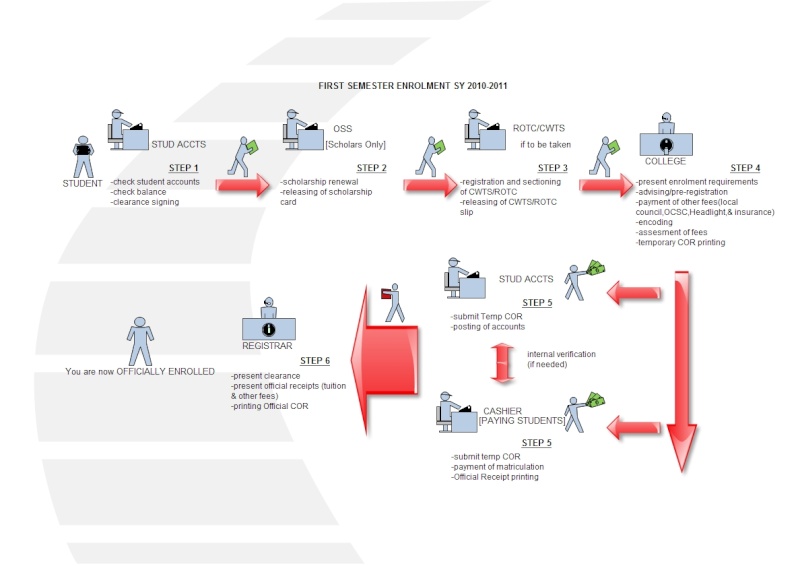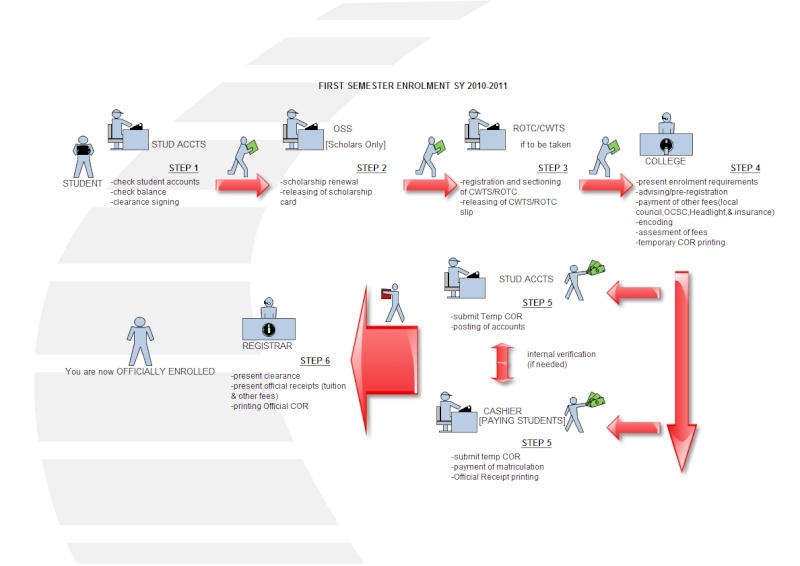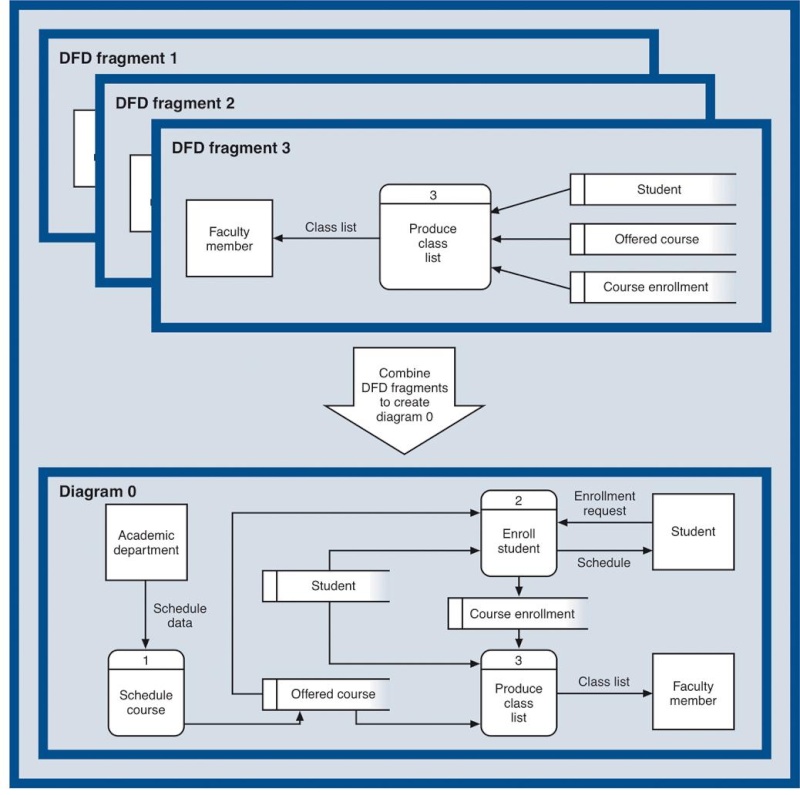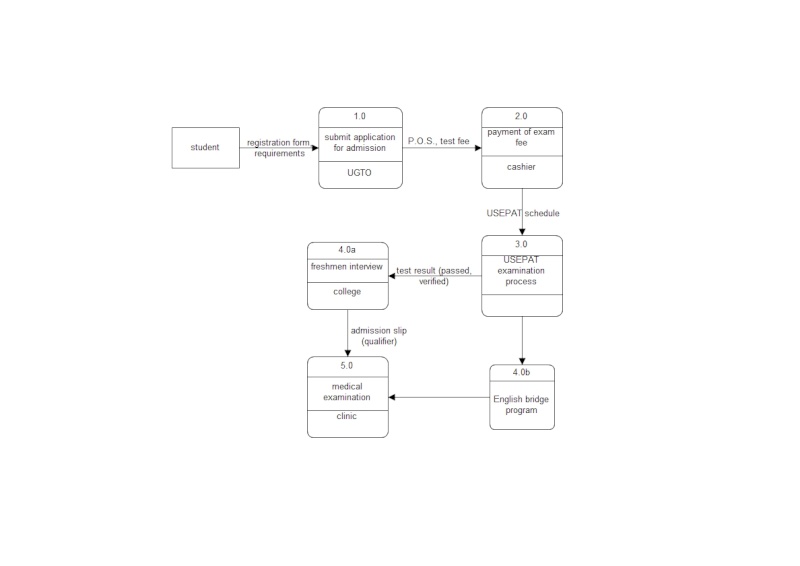(Note: This is a reply to Mr. G.'s thread in USeP-IC Web Forum - Assignment 3: Interview your university network specialist. Ask how various parts of the system communicates with each other throughout the university. (Q) Given the chance to redesign the existing setup, enumerate and discuss your keypoints for an effective and efficient network environment ideal for the university.)
Regarding the setup of the system components of the university, we asked for an interview schedule to our university specialist, Engr. Ariel Roy Reyes. It was supposed to be a special session with the whole class, since there would be many of us who needs response regarding the topic. Unfortunately, we were not able to have a face - to - face interview since our schedules did not meet. So what we did, was to consolidate the questions and email it to him as suggested by Sir Reyes. I just formulated some questions turned it over to one of my classmates who sent the email together with the other inquiries.
Basically, my questions revolve on these items:
1.In system development, how do various parts of the system communicate with each other throughout the university? In what way?
-regarding system development, Sir Reyes replied that the best persons to ask are our university programmers, Mr. Jappeht Fortich and Dr. Tamara Cher Mercado...
2. What are the components involved in the system(s) in the university? (Hardware, software, technology, etc)
-Sir Reyes admitted that he is not in the right position to discuss the details of the software components used as there are other assigned personnel for such job. However, Sir Reyes shared how he works for the system. As a network administrator, he is entrusted to maintain the university's servers to run 24 hours a day in 7 days a week. We have our current Web Server hosted in our university in the HP ProLiant ML350 Server. This server is already old but a stable one being set up in the Networks Office. The said server has already been active since Engr. VAl A. Quimno was appointed as the Network Administrator when he was not yet the dean of the Institute of Computing.
The said server has the following specification:
1. Intel Xeon 3.0 GHz, 3.2 GHz, or 3.4 GHz processors (dual processor capability) with 1MB level 2 cache standard. Processors include support for Hyper-Threading and Extended Memory 64 Technology (EM64T)
2. Intel® E7520 chipset
3. 800-MHz Front Side Bus
4. Integrated Dual Channel Ultra320 SCSI Adapter
5. Smart Array 641 Controller (standard in Array Models only)
6. NC7761 PCI Gigabit NIC (embedded)
7. Up to 1 GB of PC2700 DDR SDRAM with Advanced ECC capabilities (Expandable to 8 GB)
8. Six expansion slots: one 64-bit/133-MHz PCI-X, two 64-bit/100-MHz PCI-X, one 64-bit/66-MHz PCI-X, one x4 PCI-Express, and one x8 PCI-Express
9. New HP Power Regulator for ProLiant delivering server level, policy based power management with industry leading energy efficiency and savings on system power and cooling costs
10. Three USB ports: 1 front, 1 internal, 1 rear
11. Support for Ultra320 SCSI hard drives (six hot plug or four non-hot plug drives supported standard, model dependent)
12. Internalstorage capacity of up to 1.8TB; 2.4TB with optional 2-bay hot plug SCSI drive
13. 725W Hot-Plug Power Supply (standard, most models); optional 725W Hot-Pluggable Redundant Power Supply (1+1) available. Non hot plug SCSI models include a 460W non-hot plug power supply.
14. Tool-free chassis entry and component access
15. Support for ROM based setup utility (RBSU) and redundant ROM
16. Systems Insight Manager, SmartStart, and Automatic Server Recovery 2 (ASR-2) included
17. Protected by HP Services and a worldwide network of resellers and service providers. Three-year Next Business Day, on-site limited global warranty. Certain restrictions and exclusions apply. Pre-Failure Notification on processors, memory, and SCSI hard drives.
The university’s mail server is also running under the Compaq Proliant ML330Server which is the olders server hosted in the Networks office. Proxy and enrollment servers on the other hand, run in microcomputers or personal computers but higher specifications to act as servers.
*Typically, the purpose of this question is to know what the things that composed of the system are. I have very little knowledge about the components of how things in the network administration office works and the components that are involved here so I opted to know better what are those. So far, the university has, as mentioned, a server which hosts the university’s current web server. The said specifications are quite technical to me, as such its technicalities were not very much explained. I have little or no knowledge about what are the most important factors to consider in choosing the best performing server for the university yet I have confidence that Sir Reyes and the others who man the networks office know well how to maximize the resources. The only thing I have come to get concerned of (and perhaps the one which I have come to understand) is that it has a global warranty and that if there were hardware setbacks that need repair or service, we can contact HP for assistance or help. Hehe. Anyway, the capabilities of the server sounds good, I guess it is up to its use, but regarding the growing population of the university clients and the increasing need and use of the internet in education and research purposes, network connections necessary for the office functions, the server might not be enough to bear all the requests, thus, intensifying the demand for a more powerful upgraded server.
3. How do these communicate with one another? (Here I meant the aspects of topology, network connectivity, protocols, etc.) -may include data flow or UML diagrams to better explain.
-Sir Reyes said that all servers are connected in a shared medium grouped as one subnetwork. The extended star topology connected to a dual WAN router between our two Internet Service Providers (ISPs) is our followed topology. All the other workstations are grouped together into different subnetworks as in star topology branching out from our servers subnetwork as in extended star topology. Currently, we are utilizing class C IP address for private IP address assignments. Laboratories workstations for example, are configured statically while IP assignments in offices are configured dynamically. Proxy servers that do some basic filtering or firewall to control users’ access to the internet aside from router filtering or firewall management connect these workstations. In this case, a workstation has to pass through software and hardware - based firewall whenever it has to connect to the internet.
*From the way I see it, the network system provides ample security in terms of internet access. It is evident in setting up the firewall or filtering every workstation that has to connect to the internet. The extended star topology is also okay, since in this setup, subnetworks communicate in a star-like topology and to further gin access to other workstations which are not part of the subnetwork, they will connect via the WAN router into another subnetwork which follows the star topology pattern.
4. What are the processes involved in the communication (of each system to other systems)?
-As being pointed to by previous statements, all workstations are connected via a proxy server. If ever a workstation is being turned on, it requests for an IP address from the proxy server and connect to the network after the IP address is acquired. This is for dynamically configured IP address. Every system can now communicate and share resources within the same subnetwork and server after the connection is established.
*It is clearly stated that every system which is composed of workstations making up a subnetwork are connected via a proxy server which is their way to communicate to other network. By this setup, the workstation needs to communicate with the proxy server first before directing to other resources in the subnetwork since it has to request an IP address first.
5. How do you go along with the maintenance of the system?
-Since the servers are expected to run 24/7, it is necessary to be in good condition. Sir Reyes has a daily routine of monitoring the servers by checking logs, checking hardware performance, and checking for some problems. Observing the performance involves checking on CPU health and etc. If there are problems detected, remedies are then applied. Regular overall checkup is observed as a preventive maintenance practice at least once a week just to make sure that longer downtime will not be possibly experienced.
*Looking after the system is needed to observe how it works up to its functions. Performance of the servers should be well see to it as it may result in downtime if there are certain bugs left unnoticed. Checking on the logs, I should say, should be done in an everyday basis in that we cannot readily assure if there are other foreign objects sniffing through our system, which may further lead to affect our university’s business. The health and performance of the hardware components are also necessary be monitored more often especially that we now have learned that we have some old servers in our networks office. It is not impossible that time may come that these servers might bog down due to failure in performance especially that we have several systems being developed which require more robust and more powerful database servers.
6. Does the system follow a specific standard? Please explain.
-Different networking standards were already observed as soon as Sir Reyes was appointed Network Administrator. Everything was already in place except for some minor changes. Standards followed include cabling standards, TIA/EIA 568A-B, and different IEEE standards.
*As a university that strives to be a center of excellence in education, it is therefore important for us as an institution to follow standards. Thus, our systems which run the business of the university should conform to its specific standards. It is clearly stated that long before our interviewee was tasked to take care and primarily overlook the networks office, there are already networking standards being conformed to.
7. How is the security of the system? Are there any vulnerabilities? Risks? Corresponding mitigation techniques? Access control?
-There were software and hardware – based filtering and firewall techniques implemented. Risks and/or vulnerabilities and different mitigation methods were considered to increase security in our network. Aside from filtering and firewall, constant monitoring on networks activity also increases the security of the system.
*There were software and hardware-based filtering and firewall implementation to have security over who and which workstation should be given access to the internet. There may be risks and vulnerability in the system and also corresponding mitigation techniques but they were not much elaborated. I, personally would like to know what are those sample risks and vulnerabilities involved in the networking side especially that in the very near future, our system projects that are being developed will be soon integrated into the server. As such, there would be many subsystems that will be connecting to the server and more and more users are expected to gain access to it. This not only adds up to the needed strength boost in performance of the database server but it also counts up to the risks and vulnerability of the system.
8. Are there any interference? During what (most) times do these occur? Explain their effects especially with regards to the business of the university?
-Major interferences are normally encountered as an effect of unforeseen and beyond our control events such as black-outs and the like. The university’s business would of course be affected since this will paralyze the day – to – day activities which rely on electricity. These events might also cause further damages on our network devices which may later be the reasons for downtime. Other problems we encounter are those met by our providers for example, the National or International Gateway connection. This also affects the university’s business especially that we have also correlation with our university business partners within and outside the country.
*So far, the foremost interferences experienced are due to unanticipated events such as black-outs, power interruption, and other similar occurrences which are beyond control. But even as these things happen, the university’s business is very much affected because we are primarily dependent on the electricity to run the systems we are using inside the offices and laboratories. These minor things might also be the causes of big consequences which may later be reasons for downtime.
Like for example, the series of brown-outs and power interruption in the localities just a few months ago really affected a lot of students, faculty, and staff as well, in that its occurrences became more often and computers that are supposed to be used in the daily functions and services were off to rest. I could still remember when we were on the brink of the enrollment period, with most of our classmates have other things to consider like completion of unfinished projects and some other businesses and the expected enrollment duration took longer than usual. The result is that, we, particularly I, as far as I could recall, am lost with the real schedule of the enrollment per year level. Most of us have concerns on financial aspect (tuition and other fees) and the current status we were taking upon the enrollment process matters as to when is the exact time should we process the payments for the cashier, request subjects, home calls for allowances and additional emergency fees, etc, you know, things like that we don’t readily expect and beyond our capacity and control. The sad part there is that, other personal matters of business that each of us has to face for the day are put off because we are still on the enrollment process which have come to pending status due to electrical interruption. Things like encoding, cashiering, registering, and account tracing could not continue, lines by students got mixed up, sweats pouring because of heat since there are no electric fans or aircon, photocopier machines won’t work, computers and printers have stop operating, and of course, evidently, there is no light thus putting every office or room to darkness and high temperature (and high blood pressure not to mention!).
The scenario became a point of caution to all of us, that we always anticipate brown-outs every day and we can almost predict what typical time of the day the power might turn off. Basically, the processes concerning the business of the university are greatly affected (and so other institutions and establishments in the locality), all came to halt and transactions have to stop. I am not pretty sure exactly if the university has a power generator but I guess it has not acquired one as far as I could remember. I have seen some Uninterruptible Power Supply (UPS) in our computer laboratories but how could it supply needed electricity for longer periods of time? Major systems need enough reserved energy to supplement the power it requires to run and perform its functions.
Concerning the network communication, well, obviously, if computer peripherals and other hardware components cannot operate, then normally, communication is cut off.
Oftentimes, we have problems regarding the internet connection. A lot of times we could only gain access over a slow (turtle-like speed) connection. I am not so sure if the networks office forbids us to have a faster access since there are also times that the speed is faster. National and/or International Gateway connection probably have something to do with this at some point in time. Normally, the offices try to gain access to the internet all at once that during these peak times, connectivity is so slow and hard to establish. And obviously, transactions and business matters concerning our outside clients and partners would have to deal with this.
***As of now, with these facts or matters at hand, I could barely say that the university has an outstanding network communication of systems. The way subnetworks connect could be just appropriate for our needs but I am wondering how this could take time for long especially that there will be more subsystems to be added to the university’s server. I am thinking of how the connectivity would change in case that there would be a gradual change in terms of robustness and performance that the university servers need to gain for the processes to run smoothly according to its functions. If there would be no boost in strength then the server might experience downtime due to the commands and requests that are already becoming beyond its capacity. Normally, connections would not work out smoothly, and communications among subnetworks and other systems might be greatly affected. As of now, I could not give a concrete design as to what the system connectivity setup should be. More details will come up and I would be adding more to this topic. ^^
Acknowledgment:
Microsoft Encarta Dictionaries
yahoo!mail




















